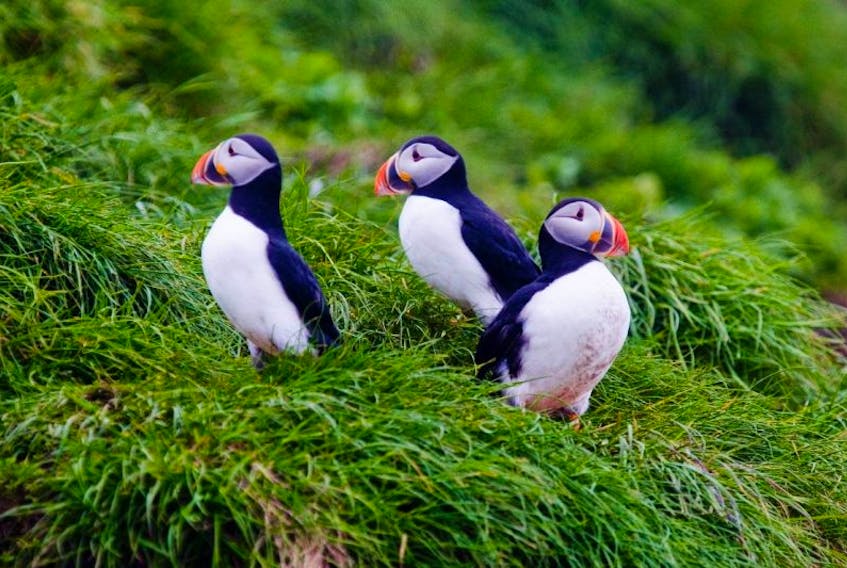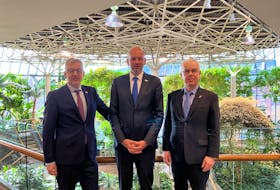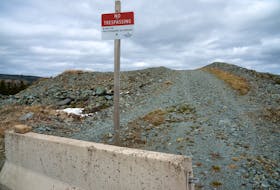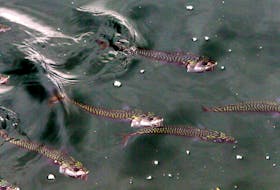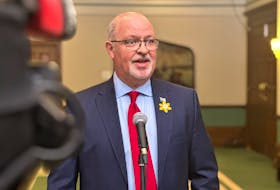If the provincial government is willing, residents in this province could someday use their licence plates to support conservation efforts.
The provincial chapter of the Canadian Parks and Wilderness Society (C-PAWS-NL) is leading the charge on implementing conservation licence plates – a voluntary program in which residents pay a small fee to get a special licence plate featuring plants or animals native to the province.
The funds raised would be dispersed annually to conservation groups.
It’s a program that has found success in many other jurisdictions for some time.
Last year alone, a similar program in New Brunswick brought in $380,000 from 55,000 conservation plates. That province has generated nearly $4 million for conservation groups since 1998 through the licence plate program.
“It’s an initiative that works, so it’s kind of a no-brainer,” said C-PAWS-NL conservation co-ordinator Kathy Unger.
“It will create or at least keep people in their jobs, and it’s going to benefit a lot of areas of the environment, not just one niche species or just one part of the province – it can have a really far reach.”
About a year ago, Unger thought about trying to implement the program in Newfoundland and Labrador. Since then, she has received 20 letters of support from environmental organizations across the province.

Unger has also gained the support of at least one major dealership in the province – Capital Auto Group.
“We were excited when C-PAWS brought this idea to us at Capital Subaru given that the Subaru brand is one that is very heavily focused on the enjoyment and appreciation of nature,” Matt Kelland, director of marketing for Capital Auto Group, stated in an email to The Telegram.
“We understand that projects like this one have been very successful elsewhere in Canada and are hopeful that we'll see a licence plate program emerge here in the province that we can support across all Capital Auto Group dealerships.”
The hurdle is trying to get an audience with the provincial government.
“It’s been almost a year of just, ‘Please listen to my idea,’” Unger said.
However, she said the province would not be “going in blindly.”
“The big plus for this program is it’s been done before in many, many other places.”
Throughout her research, she has received advice from groups in New Brunswick and Prince Edward Island about how the programs work there.
Powerful visual statement
Unger said the licence plates would also make a powerful visual statement, emphasizing the province’s commitment to its valued natural heritage.
There could also be an opportunity for public input about which iconic species people would like to see on the plates.
“It could be a puffin, or a pitcher plant, or a whale, or a caribou – we have really special species in the province.”
Logistically, the funds from the conservation plates would be managed by a voluntary conservation fund committee made up of representatives from Indigenous, hunting, angling, trapping, naturalist and conservation interests.
Unger said there are more than 55 environmental organizations with a wide range of projects ongoing across the province that the funds could help support.
Right now, many of those organizations struggle to get funding.
“A lot of projects just don’t get realized,” she said.
“A lot of smaller environmental groups … just kind of dissolve because there’s no sustained funding to apply to year after year.
“There’s a lot of us small groups, and we have different strengths, but no one group is going to solve all the problems. This committee would take this allocated funding from these conservation plates and distribute them.”
The next step is getting a meeting with provincial government representatives.
“I just need that right audience to present this information to, and I think everyone that’s seen it so far has been impressed, so I’m hoping the right decision-makers will also be impressed,” said Unger, adding she hopes the program will get a green light “as soon as possible.”

